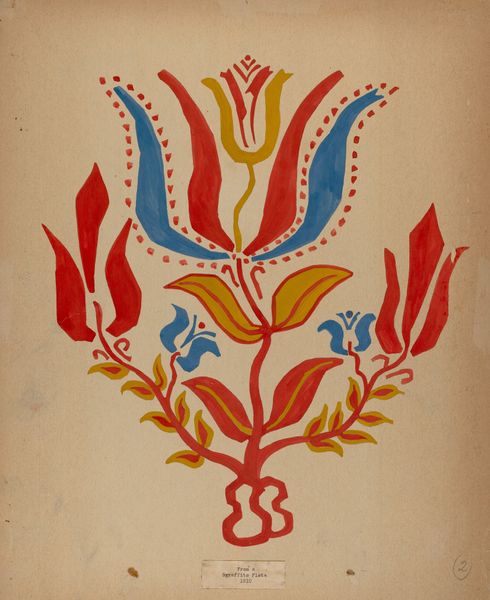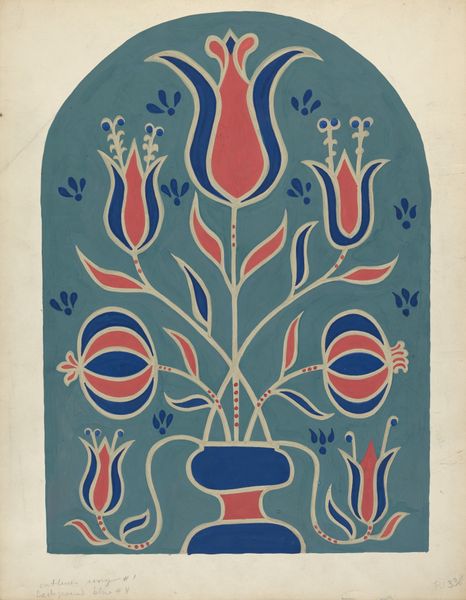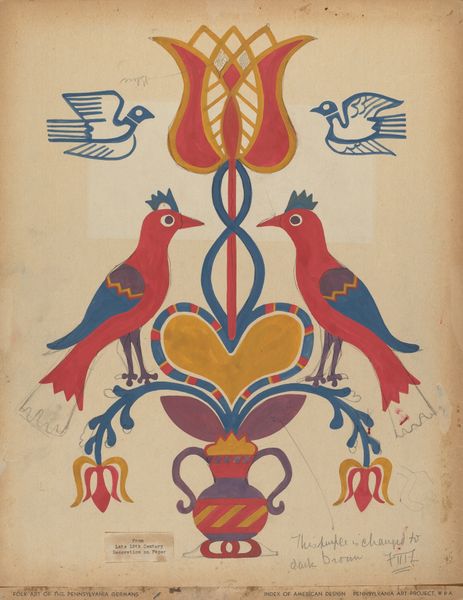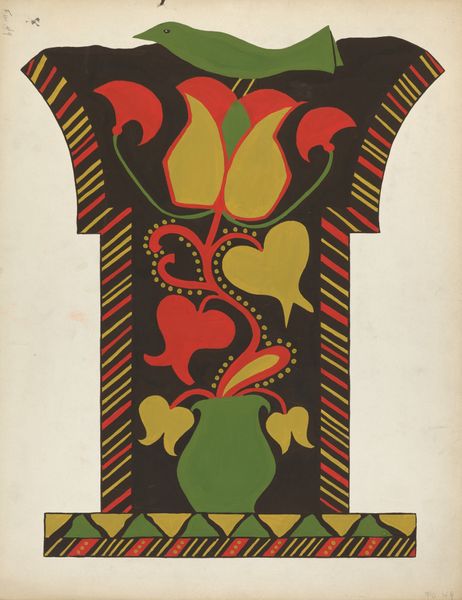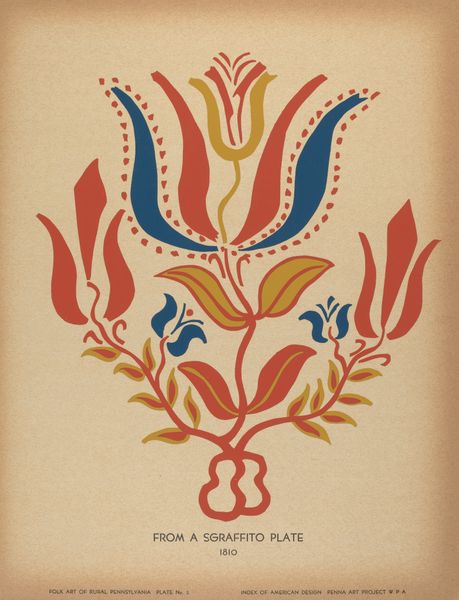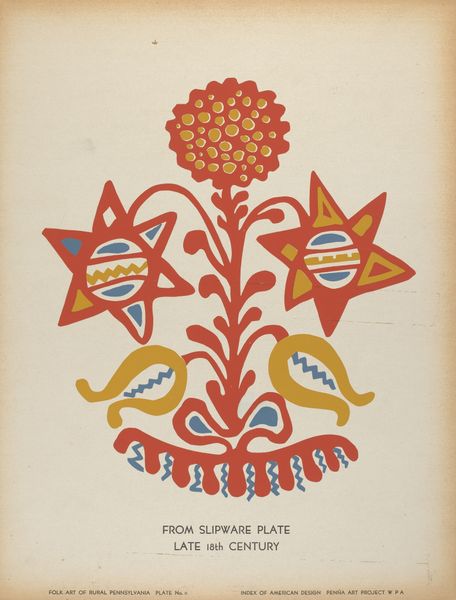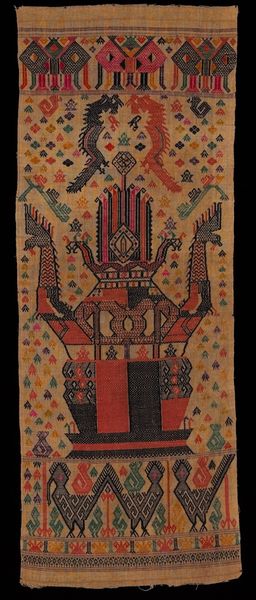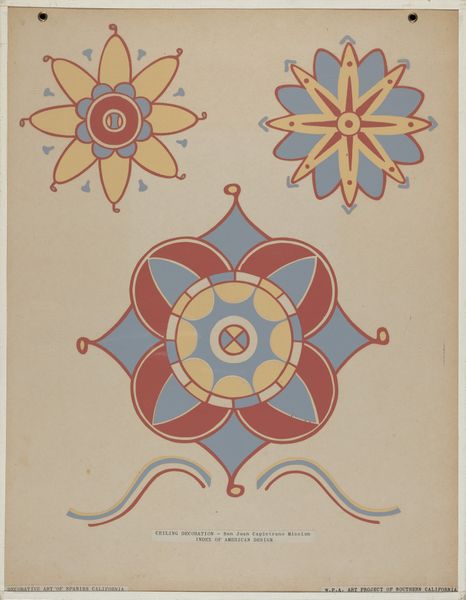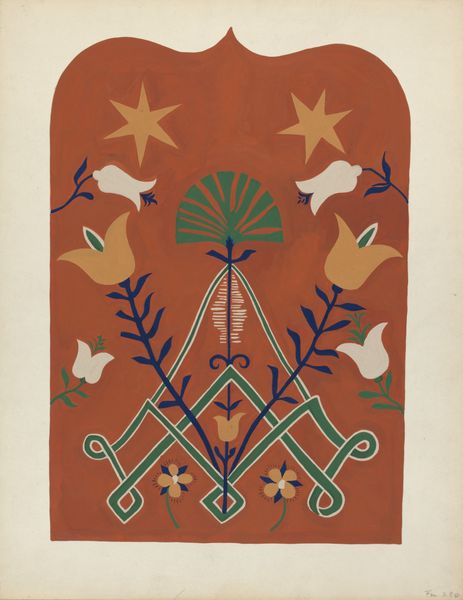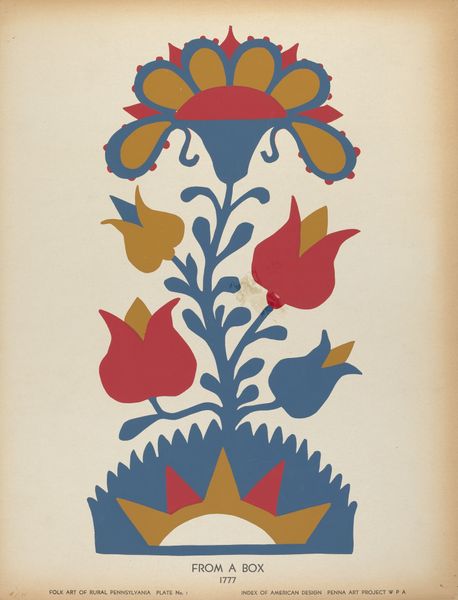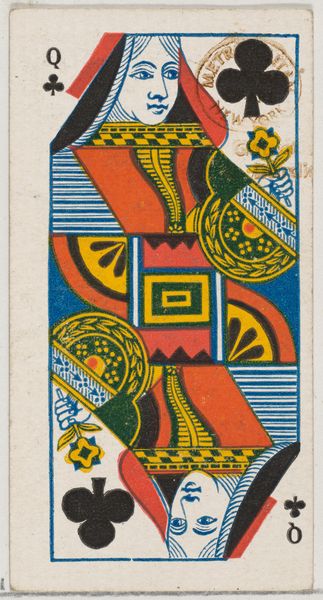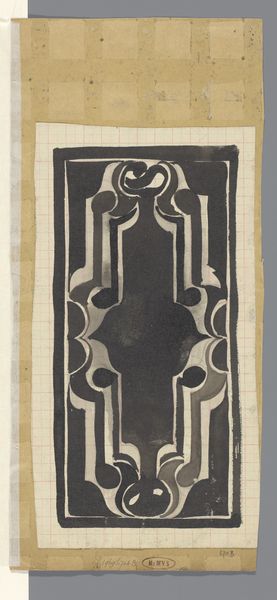
Drawing for Plate 9: From the Portfolio "Folk Art of Rural Pennsylvania" c. 1939
0:00
0:00
drawing, watercolor
#
drawing
#
landscape
#
indigenism
#
watercolor
#
folk-art
#
geometric
#
abstraction
#
watercolour illustration
#
decorative-art
#
watercolor
Dimensions: overall: 46 x 35.6 cm (18 1/8 x 14 in.)
Copyright: National Gallery of Art: CC0 1.0
Curator: This watercolor drawing, “Drawing for Plate 9: From the Portfolio "Folk Art of Rural Pennsylvania," dates from around 1939 and is an anonymous work. It’s so striking. Editor: It really is! The bold colors and geometric shapes give it a really distinctive look. There’s almost something modern about the abstraction of it, even though it's rooted in folk art traditions. How do you interpret its role as folk art through the lens of history and culture? Curator: That’s a key question. The 'Index of American Design' project, part of the WPA during the Depression, was intensely interested in documenting and, in some ways, defining a national artistic identity. This image comes from that project, right? Editor: Yes, that's what the title indicates! Curator: So, what does choosing Pennsylvania German folk art – with its European roots – say about America's self-image at the time? Were they trying to connect to older traditions in a new country, or perhaps re-imagine these traditions as fundamentally American? And who decided what qualified as 'folk art' worthy of preservation and documentation? It makes you wonder about power structures inherent in collecting and classifying artistic forms. Editor: That's fascinating, I hadn’t considered the choices involved in defining 'folk art' in this way. Thinking about whose art gets valued at a national level, is eye-opening. Curator: Exactly. It encourages us to look critically at how institutions shape our understanding of art history. This isn't just a charming drawing; it’s a product of specific socio-political forces. Editor: I'll definitely look at art through that lens more often. Curator: I hope you do! The political choices in imagery always merit a second look.
Comments
No comments
Be the first to comment and join the conversation on the ultimate creative platform.
